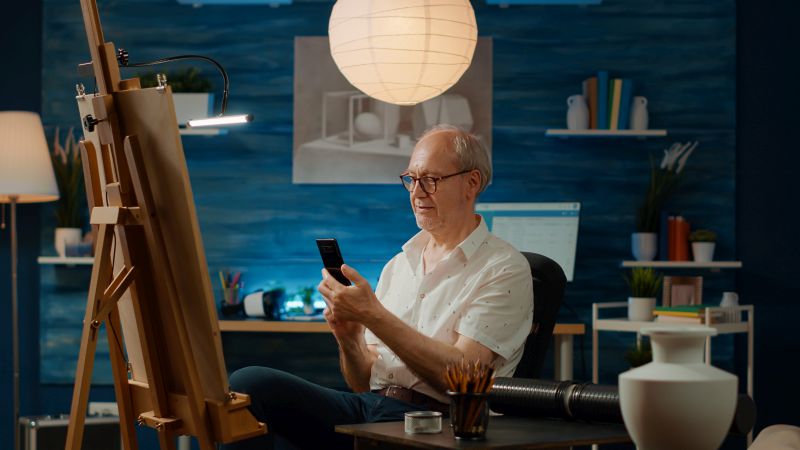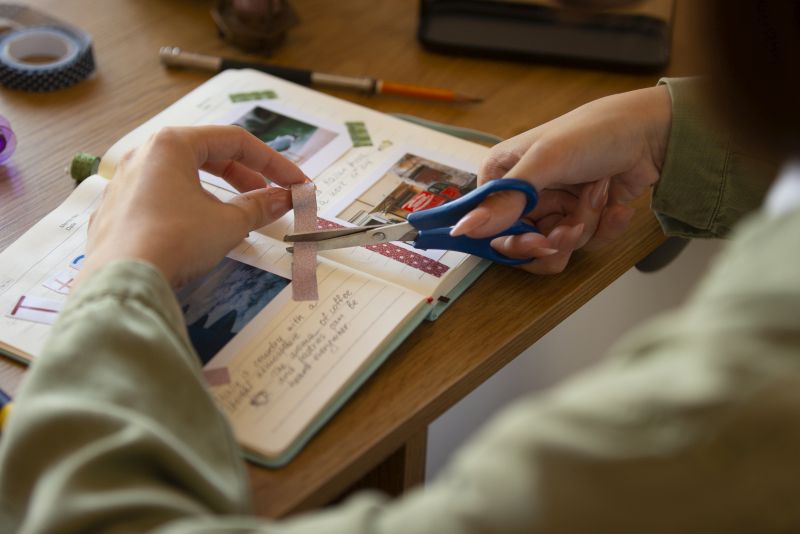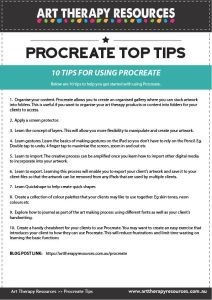THIS POST INCLUDES:
1. The Digital Canvas
2. Remote Art Therapy Sessions
3. Technological Challenges
4. Free Download Procreate Tip Sheet
THE DIGITAL CANVAS

Integrating technology into your art therapy practice can expands the possibilities for creative expression and potential therapeutic solutions. By leveraging digital tools, apps, and virtual platforms, art therapists can offer clients innovative and personalized interventions that enhance their overall therapeutic experience. However, it is essential to approach technology integration thoughtfully, considering ethical, cultural, and practical considerations to ensure the effectiveness and inclusivity of art therapy practice in the digital age.
Integrating technology in art practice can be seen as controversial to some given the potential pros and cons associated with technology in general. Art making is primarily a tactile process that involves a creative element but also a sensory element where the creator can identify specific textures, smells, and sounds when using art mediums. When using technology, the sensory experience can be reduced given all creative work is conducted using a one dimensional medium such as tablet device or computer.
This can present as a challenge, however, technology can also present an opportunity to introduce those that struggle with sensory issues. Additionally, we need to understand that future generations will become more dependent on devices.
Embracing technology in art therapy opens new avenues for creativity and connection. In this article, we explore the intersection of technology and art therapy, delving into the use of digital tools, apps, and virtual platforms. Art therapists seeking to enhance their practice can discover the opportunities and potential challenges associated with integrating technology into the therapeutic process.
The Dynamics of Technology in Art Therapy
Technology acts as a catalyst for innovation in art therapy. Art therapists are increasingly incorporating digital tools to enhance the therapeutic process, providing clients with diverse and dynamic means of artistic expression. This intersection of technology and art therapy offers a new way of integrating art therapy with digital mediums in the hope of expanding art therapy outside of the traditional art therapy studio.
Digital Tools for Art Therapists
a. Apps as Creative Catalysts – drawing and painting apps can provide a versatile and accessible platform for clients to express themselves artistically. Art therapists can guide clients in selecting apps that align with their preferences and therapeutic goals.
b. Virtual Platforms – Virtual platforms offer art therapists the opportunity to create expansive and immersive therapeutic spaces. Through virtual reality (VR) or augmented reality (AR) platforms, clients can explore and interact with digital environments. Art therapists can tailor these virtual spaces to meet the specific needs of their clients. As an aside virtual reality exposure therapy for the armed forces is a known exposure therapy. This can extend to art therapy also.
c. Digital Drawing Tablets – Digital drawing tablets serve as a bridge between traditional and digital art mediums. Art therapists can leverage these tablets to facilitate a seamless transition for clients familiar with traditional art techniques. Drawing on tablets can help integrate different art mediums such as digital collage and video construction for example. Like other art mediums that blend together, using tablets with a variety of software applications can help clients create art using drawing, music, and other visual processes.
d. Personalized Therapeutic Apps – Advancements in technology allow art therapists to customize therapeutic apps to meet the individual needs of their clients. Tailoring apps to address specific goals, whether related to stress reduction or emotional expression, enhances the therapeutic impact. This personalized approach maximizes the benefits of technology in art therapy.
Integrating technology into art therapy practice requires careful consideration of ethical, cultural, and practical factors. Art therapists must ensure that the use of digital tools aligns with ethical guidelines and respects clients’ privacy and autonomy. Additionally, cultural sensitivity is essential when selecting technology-based interventions to ensure inclusivity and accessibility for all clients.
Furthermore, art therapists should assess clients’ comfort and familiarity with technology and provide appropriate support and guidance as needed. Offering training sessions or tutorials on using digital tools can empower clients to engage more confidently in digital art therapy sessions. Additionally, art therapists should remain mindful of the potential limitations or challenges associated with technology, such as technical glitches or connectivity issues, and have contingency plans in place to address them effectively.
Below is a suggested list of issues to consider and implement when introducing new digital tools into the art therapy space:
Action Plan:
- Assess clients’ comfort and familiarity with technology
- Provide training and support for using digital tools
- Select technology-based interventions aligned with clients’ goals
- Ensure ethical and cultural sensitivity in technology use
- Have contingency plans for technical issues or challenges
- Regularly evaluate and adjust technology integration in practice
- Seek feedback from clients on their experience with technology
- Stay updated on advancements in art therapy technology
- Network and collaborate with other art therapists using technology
- Reflect on the impact of technology on therapeutic outcomes and client engagement
REMOTE ART THERAPY SESSIONS

The integration of technology into art therapy practice has opened up new possibilities for both therapists and clients alike. Remote art therapy sessions offer a convenient and accessible way to engage in therapy, while still maintaining the benefits of the therapeutic process. By embracing technology and incorporating it thoughtfully into practice, art therapists can enhance their ability to reach and support clients in meaningful ways.
Art therapists are increasingly turning to technology to innovate and expand their practice. One of the most significant advancements in recent years has been the ability to conduct remote art therapy sessions. This technological breakthrough has not only overcome geographical barriers but has also significantly expanded the reach of art therapy services, making them more accessible and inclusive.
Remote art therapy sessions offer a unique opportunity for both therapists and clients to engage in the therapeutic process from the comfort of their own spaces. This format eliminates the need for clients to travel to a physical location, reducing logistical barriers such as transportation issues and scheduling conflicts. Additionally, remote sessions provide a sense of privacy and confidentiality for clients who may feel more comfortable expressing themselves in familiar surroundings.
Despite the distance, art therapists can still employ a variety of techniques and interventions to facilitate meaningful therapeutic experiences during remote sessions. Here are some effective approaches:
- Digital Art Platforms: Utilize digital art platforms that allow clients to create and share artwork digitally. These platforms often include features such as drawing tools, colour palettes, and sharing options, enabling clients to express themselves creatively in real-time.
- Virtual Whiteboards: Virtual whiteboard apps or software can serve as a collaborative space where therapists and clients can engage in art-making activities together. Therapists can provide prompts or exercises, and clients can respond by drawing or writing directly on the virtual whiteboard.
- Screen Sharing: Take advantage of screen sharing capabilities to review and discuss clients’ artwork during sessions. This allows for real-time feedback and exploration of the artistic process, fostering deeper insights and reflections.
While remote art therapy offers numerous benefits, there are also important considerations to keep in mind when integrating technology into practice:
- Technical Support: Ensure that both therapists and clients have access to reliable internet connections and appropriate devices for conducting remote sessions. Offer technical support and troubleshooting assistance as needed to minimize disruptions.
- Confidentiality and Privacy: Take proactive measures to maintain client confidentiality and privacy during remote sessions. Use secure video conferencing platforms and encrypted communication channels to protect sensitive information.
- Boundaries and Limitations: Establish clear boundaries and guidelines for remote sessions, including expectations around timing, communication, and confidentiality. Acknowledge and address any limitations or challenges associated with conducting therapy remotely.
We have explored art therapy and telehealth before. You can find more information on the following blog post here: Enhancing Client Communication with Telehealth
TECHNOLOGICAL CHALLENGES

Integrating technology into art therapy practice presents both opportunities and challenges for therapists and clients alike. By embracing technology and implementing thoughtful strategies and interventions, art therapists can enhance the therapeutic experience and reach a wider audience. Through careful consideration of digital literacy, ethical guidelines, and client needs, art therapists can harness the power of technology to empower their clients and facilitate meaningful healing and growth.
As art therapists seek to expand their practice and reach a wider audience, integrating technology into their therapeutic approach has become increasingly essential. However, this integration comes with its own set of challenges and considerations.
One of the primary challenges art therapists face when integrating technology into their practice is ensuring digital literacy among both themselves and their clients. Embracing technology in art therapy necessitates a level of digital literacy, which involves being comfortable navigating digital tools and platforms. To address this challenge, art therapists should provide guidance and support to both themselves and their clients, ensuring that everyone involved in the therapeutic process feels empowered to utilize technology effectively.
Despite the challenges, there are numerous techniques and interventions that art therapists can employ to leverage technology in their practice:
- Digital Art Platforms: Utilize digital art platforms that provide a wide range of tools and features for creating artwork digitally. These platforms often include drawing tools, colour palettes, and sharing options, allowing clients to express themselves creatively in a digital environment.
- Virtual Reality (VR) Therapy: Explore the use of virtual reality technology to create immersive therapeutic experiences. VR therapy allows clients to engage with virtual environments and artworks, providing a unique and interactive therapeutic experience.
- Teletherapy: Embrace teletherapy platforms that enable therapists to conduct remote sessions with clients. Teletherapy offers convenience and accessibility, allowing clients to engage in therapy from the comfort of their own homes.
When integrating technology into art therapy practice, it is important to consider the following factors:
- Privacy and Confidentiality: Ensure that all digital platforms and tools used in therapy adhere to strict privacy and confidentiality standards to protect clients’ sensitive information.
- Accessibility: Take into account the accessibility needs of all clients, including those with disabilities or limited access to technology. Provide alternative options for clients who may face barriers to accessing digital tools.
- Ethical Guidelines: Adhere to ethical guidelines and standards of practice when using technology in therapy, ensuring that all interactions and interventions are conducted in a professional and ethical manner.
Below we have included a 10 step action plan that you may want to consider when implementing technology in your art therapy practice when interacting with clients:
10-Step Action Plan:
- Assess Digital Literacy: Evaluate the digital literacy levels of both therapists and clients, providing training and support as needed.
- Select Appropriate Technologies: Choose digital platforms and tools that align with the therapeutic goals and preferences of clients.
- Establish Clear Boundaries: Set clear boundaries and guidelines for the use of technology in therapy sessions, including expectations around privacy and confidentiality.
- Provide Training and Support: Offer training and support to both therapists and clients to ensure they feel comfortable navigating digital tools and platforms.
- Monitor Technological Use: Regularly monitor and assess the effectiveness of technology in therapy sessions, making adjustments as needed to optimize the therapeutic experience.
- Stay Informed: Stay informed about the latest developments in technology and how they can be applied to art therapy practice, attending workshops and continuing education events as needed.
- Collaborate with Colleagues: Collaborate with other art therapists and mental health professionals to share insights and experiences related to the integration of technology in therapy.
- Seek Feedback: Solicit feedback from clients about their experience with technology in therapy sessions, incorporating their input into future sessions and interventions.
- Reflect and Adapt: Reflect on the impact of technology on therapy outcomes and be willing to adapt and refine your approach based on feedback and experiences.
- Advocate for Accessibility: Advocate for greater accessibility and inclusion in the use of technology in art therapy, ensuring that all clients have equal access to therapeutic services.
FREE DOWNLOAD
SIGN UP below to gain access to our RESOURCE LIBRARY and download the FREE Procreate Top Tips.

BUILD YOUR ART THERAPY REFERENCE MATERIALS:
Pin this image to your Pinterest board.

SHARE KNOWLEDGE & PASS IT ON:
If you’ve enjoyed this post, please share it on Facebook, Twitter, Pinterest. Thank you!
